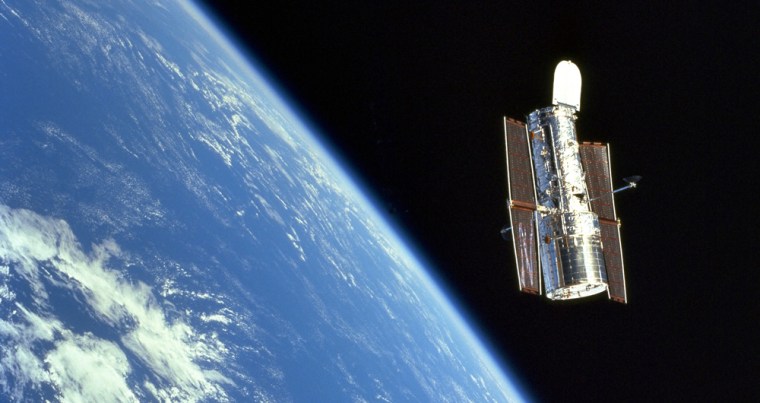A report from National Academy of Sciences, released Wednesday, recommends that NASA scrap plans to service the Hubble Space Telescope robotically and instead use a space shuttle to get the job done as originally planned.
NASA Administrator Sean O’Keefe canceled a planned shuttle servicing mission in January, citing an unwillingness in the wake of the Columbia disaster to send astronauts to any orbital destination other than the international space station.
The public hue and cry led U.S. lawmakers to call for an outside opinion on the risks and merits of Hubble servicing, and O’Keefe soon agreed to ask the National Academy of Sciences to convene a committee to evaluate options for saving the space telescope.
In a final report released Wednesday, “Assessment of Options for Extending the Life of the Hubble Space Telescope,” the committee concluded that a shuttle mission is the “best option” for extending the life of Hubble and preparing the telescope for eventual robotic deorbit. Such a mission, the report says, ought to take place as early as seven flights after NASA resumes shuttle operations.
“The committee recommends that NASA pursue a shuttle servicing mission to HST that would accomplish the above stated goal. Strong consideration should be given to flying this mission as early as possible after return to flight,” the report states.
The final report also rebutted O’Keefe’s objections to shuttle servicing as too risky, saying “the difference between the risk faced by the crew of a single shuttle mission to the ISS — already accepted by NASA and the nation — and the risk faced by the crew of a shuttle mission to HST, is very small. Given the intrinsic value of a serviced Hubble, and the high likelihood of success for a shuttle servicing mission, the committee judges that such a mission is worth the risk.”
NASA officials told Space.com that they have received the report and are in the process of reviewing its findings.
Safe haven for Hubble servicing crews
NASA officials have been exploring the possibility of using the space station as a for shuttle astronauts on station-bound flights should their spacecraft suffer damage. The orbital facility could support the additional crew for about 45 days, with the possibility of using another shuttle to launch a rescue mission within 35 days, NASA officials said Monday.
However, the National Academy of Sciences committee found that the space shuttle itself could function as a safe haven for Hubble servicing missions by an extreme power-down of the orbiter's systems, though the configuration could not support crews as long as the space station could.
"The duration is limited, due to critical consumables, to between 17 and 30 days depending on when the contingency power-down is done," the report states. "This would require the launch of a rescue vehicle within days after launch of the servicing shuttle that encounters the problem."
In the panel’s final analysis, a robotic mission is seen as just too risky, given the state of technology and the time available to design, build and test the robotic craft. NASA has said that it would need to launch the mission by 2008 if it wanted to be sure that it could upgrade Hubble before its critical gyroscopes fail.
Wide-ranging estimates
Estimates for the mission ran as high as $2.4 billion, although NASA officials have said they think the job could be done for closer to $1.5 billion.
“The need for timely servicing of Hubble imposes difficult requirements on the development of a robotic servicing mission,” the report reads. “The very aggressive schedule, the complexity of the mission design, the current low level of technology maturity, and the inability of a robotics mission to respond to unforeseen failures that may well occur on Hubble between now and the mission make it highly unlikely that the science life of HST will be extended through robotic servicing.”
SPACE.com Staff Writer Tariq Malik contributed to this report
